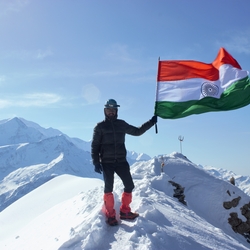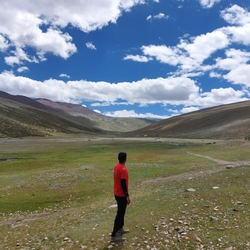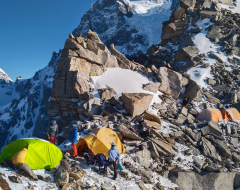It’s all fun in the sun until you get that nasty, peeling sunburn.
Ouch.
As soon as we step out of our homes, we expose our skin to the sun. A little sunlight is necessary for our bodies, as it is a rich source of vitamin D, but too much of it can have some serious effects on our skin. Especially at high altitudes, you are at higher risk for skin damage as the exposure to the sun is much more intense. As a result, it is important to know all about the harms that can arise and the precautions that must be taken to ensure your adventure is worry-free.

Here’s all you need to know for your next outing
Whenever you are exposed to the sun’s UV rays for a long duration, there is always a risk of developing some skin reactions. They can be as serious as skin cancer or as trivial as tanning.
There are two types of UV rays. UVA rays compose 95% of the sun rays which reach us and penetrate deeply into the skin. Then there are UVB rays, which composes the small part of the sun rays and harms the top layers of our skin. Good protection is needed from these UV rays.
The UVA rays are less intense than the UVB rays, but they can penetrate through clouds and even through glass. They cause premature skin aging, wrinkling, and tanning. The UVB rays are even more harmful, as they cause sunburns, skin reddening, and skin cancer. The UVB rays are more prevalent on high altitudes and on reflective surfaces such as ice.
The potency of the sun rays is higher on mountains than in the plains as there is less atmosphere to protect us from them. Therefore, it is important to choose your sunscreen very wisely whenever going on a trek. You must remember that even if it is a winter trek like Kedarkantha or Brahmatal, it is important to use sunscreen at all times. UV rays can pierce through clouds and reflect on snow.

Sunscreen is a lotion, gel or spray that absorbs or reflects some of the sun’s UV radiation and helps prevent skin problems like sunburns, tanning and skin cancer.

Here are a few steps to help you choose the perfect sunscreen for your trip.
First of all, we must be aware of all the parameters that we must keep in mind before we go a buy any sunscreen.
There are two broad classifications under which different sunscreens fall- physical sunscreens and chemical sunscreens. Physical sunscreen is composed of active mineral ingredients, such as titanium dioxide or zinc oxide, which sit on top of the skin and reflect the sunlight, while chemical sunscreens absorb into the skin, absorb the sunlight and then release them in the form of heat from the body.
Crazy, right?
When on a trek it is advised to use chemical sunscreen as it provides protection from the UVB rays more fully, which are more harmful. Also, since chemical sunscreen is absorbed in the skin, it tends to give protection for a longer duration of time and does not wear off with sweat as easily.
Another important term that we must have heard and ignored a million times is the SPF. The abbreviation SPF stands for ‘sun protection factor.’ It is a measure of the fraction of sunburn-producing UV rays which reach our skin. It is important to use high SPF sunscreen on high altitudes in order to get complete protection from the harmful sunrays. You must use a sunscreen of SPF 50 or higher in order to protect your skin from UVA and UVB rays.

Also, when we are walking for hours at a time, we get sweaty and the sunscreen tends to wear off. Therefore, reapplication is also very important. If we do not apply sunscreen after constant intervals (the suggested timing is every two hours), we are more at risk to sunburns which hamper the overall trek experience.
The harsh sun can harm the skin and hamper the overall trekking experience. Therefore, we should take appropriate care and avert any unwanted experiences. Afterall, we all know that ‘prevention is better than cure’.






